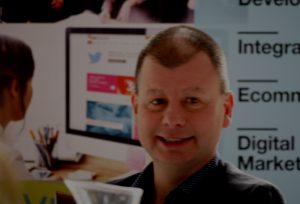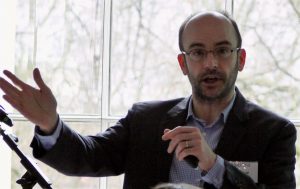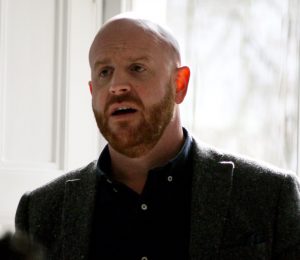
So, as a membership organisation, trade association, or professional body, your world is changing. Your role as gatekeeper to privileged information has disappeared. The internet has given free admission to sector data. Previously, when you spoke, your members listened, but not anymore! You understand social media is the new member engagement front – or so everyone tells you –and yet a fortune spent on a CRM system, a swanky new website, shifting your brochure to Facebook, and tweeting like crazy hasn’t quite cracked it. You’re beginning to wonder if you’ve become busy fools! How can you make this surge of activity work for you? Why is everyone else succeeding when you’re not?
Well, back in the bygone times, retailers – for example – had local high street shops, and they developed a community of interest by chatting to their customers and appreciating their lives and requirements. Membership bodies did the same using print media, social events, and meetings. But now, because we enjoy less personal contact – preferring to check our phones 120 times a day – and our ‘community of interest’ may be flung far and wide, we need to use new tools to achieve the same ends.
Top brands think outside the box to develop community, inspire trust, and build on emotional connections. But don’t just take my word for it! NetXtra brought a couple of experts to their Breakfast Club meeting on 22nd March in the appropriate surroundings of the British Academy in St. James’s, London, to prove this point
NetXtra, CEO, Simon Palmer
 Introducing the proceedings, and pressing home the point about the fragmentation of community, NetXtra CEO, Simon Palmer, first tested participants’ knowledge of popular brands with a quiz, then cited some examples of associations who had successfully integrated their online presence with the needs of their clientele. Among his favourites were ABRSM, Coeliac UK, and IBD, the Institute of Brewing and Distilling. But why?
Introducing the proceedings, and pressing home the point about the fragmentation of community, NetXtra CEO, Simon Palmer, first tested participants’ knowledge of popular brands with a quiz, then cited some examples of associations who had successfully integrated their online presence with the needs of their clientele. Among his favourites were ABRSM, Coeliac UK, and IBD, the Institute of Brewing and Distilling. But why?
ABRSM is, in its own words, the UK’s largest music education body, one of its largest music publishers and the world’s leading provider of music exams, offering assessments to more than 630,000 candidates in 93 countries every year. Yet for Simon their current success lays in making connections and tracking and responding to trends. Firstly, through its partnership with the Royal Schools of Music, it supports high-quality music-making and learning around the world. Secondly, by collaboration they have launched Classical 100 and become ‘Classic FM’s Partner in Music Education’; among other things celebrating the role of music teachers.
Coeliac UK, on the other hand, has eased the lives of its members by using its online presence to publish diet plans, suggest recipes, and provide an invaluable ‘where to eat’ guide for those struggling with this debilitating condition. Add to that a gluten free food app, and Coeliac UK has put itself front and centre of users lives.
For IBD, social sharing is the key which – along with analysing requirements, listening, involvement, testing, and feedback – are what Simon reckons makes an engaging and responsive community.
Allen Reid, Hart Square
 Allen Reid is director of client projects at Hart Square, an independent consultancy that helps NFPs select and implement CRM systems, and integrate them with existing users and structures. So his opening exclamation “Hands up those who think they’ve got a CRM system in their company that is fully integrated with their website, mailing, and membership? None! This is 2017 and we were having the same conversation in 1999!” could either be read as frustration, or satisfaction that he won’t be short of work any time soon.
Allen Reid is director of client projects at Hart Square, an independent consultancy that helps NFPs select and implement CRM systems, and integrate them with existing users and structures. So his opening exclamation “Hands up those who think they’ve got a CRM system in their company that is fully integrated with their website, mailing, and membership? None! This is 2017 and we were having the same conversation in 1999!” could either be read as frustration, or satisfaction that he won’t be short of work any time soon.
The problem it seems is Bob! Bob is a risk, but also an opportunity. Bob is the average member, and Bob doesn’t care about your departments. He isn’t interested in your data silos, and doesn’t much care about his membership body. He’s either busy or lazy; definitely doesn’t like admin; will not just go to the website; and does NOT want to call you. He reads about one in fifteen items you send him, and consequently doesn’t have a very good idea of his member benefits. And frankly, he wants to spend as little time and money with you as possible!
But hang on a minute, is Bob really the problem, or is it you? Are you engaging his interest, and are you solving his problems? Are you offering emotional connection and trusted solutions? Are you offering AUTHORITATIVE advice and guidance? If not, you’d best have a look at mumsnet.com because that – by parents, for parents – is the new normal.
But how to respond? NCMA (National Childminding Association), the Family & Childcare Trust, The Fostering Network, Parenting UK, and PACEY (Professional Association for Childcare and Early Years), have all been affected to some extent by the popularity of mumsnet.com. But PACEY has applied what is has learned from mumsnet by responding and evolving. Steeling some of their clothes perhaps – by focussing on content (knowledge, and learned materials), news, jobs, events, community, and self-service – but also by opening up to non-members. And by not forgetting a warm, human, welcome to new members!
Robin Bryant, MOBAS
 “A brand is not a logo, nor an identity, or a product. It is a gut feeling, based on trust, and built on emotional connections. A brand isn’t what you say it is, it’s what they – the audience – say it is” says Rob Bryant. Robin is joint managing director of MOBAS, an agency that creates award-winning campaigns for clients like Greene King, Mercure, Hungry Horse, and Cambridge University Press, so he should know!
“A brand is not a logo, nor an identity, or a product. It is a gut feeling, based on trust, and built on emotional connections. A brand isn’t what you say it is, it’s what they – the audience – say it is” says Rob Bryant. Robin is joint managing director of MOBAS, an agency that creates award-winning campaigns for clients like Greene King, Mercure, Hungry Horse, and Cambridge University Press, so he should know!
There’s a simple formula too. T = R + D or trust equals reliability plus delight. Trust comes from having a consistent personality that always delivers its promises, and meeting and beating customer expectations at every stage. But first, define your personality, purpose, and delivery promise.
If you can do all that, and connect the brand to its community, then there are five rules for ensuring that your brand travels and connects with its audience. First, stay true to your purpose. Walk the talk. Have a consistent personality, always delivering on promise. Second, build a network of brand ambassadors, because audience to audience referrals are the most powerful tool in connecting brand with audience. Next, build emotion. Seventy percent of audience loyalty and spending decisions are based on emotional factors. And, don’t forget to listen, listen, and listen! Your brand is what your audience say it is, and listening and reacting ensures you stay relevant to them. It can also help identify threats.
Lastly, evolution must be constant, because evolving – while staying true to purpose and promise – keeps you relevant and trusted. But beware, if your audience isn’t connecting with the brand it could be because it has become too self-centred, it doesn’t have a clear target audience, or its messages don’t evoke emotion. But maybe, when all’s said and done, there’s lack of engagement, your team and culture are wrong, or you are just too impatient for results!
How was it for you?
 And finally, what did a participant think on the day? Did the event live up to their expectation, provide fresh insights, and have relevance to their role? Did they go away with new perspectives that could be applied to the real world? I’ll leave it to Sarah McCandless, Senior Patient Relations and Engagement Manager, at Cancer Research UK, to have the last word:
And finally, what did a participant think on the day? Did the event live up to their expectation, provide fresh insights, and have relevance to their role? Did they go away with new perspectives that could be applied to the real world? I’ll leave it to Sarah McCandless, Senior Patient Relations and Engagement Manager, at Cancer Research UK, to have the last word:
“I didn’t know what to expect from the breakfast club. I’m not great at early starts so I was definitely hoping it would be useful. On arrival, I was greeted warmly and knew then that this was going to be a good event. I was surprised by the number of people in attendance. It was a good sized group, and there was lots of chatter happening over the tea and coffee.
I manage Your Involvement Network at Cancer Research UK. So the subject matter really interested me. The short talks were pitched just at the right level and allowed time for questions and answers afterwards. It was really interesting to hear how others are connecting with their communities and the examples highlighted were really insightful.
I certainly enjoyed listening to Robin Bryant. His talk on Brand and how it connects with an audience was like music to my ears. I work with a strong, visible brand every-day and I was scribbling away furiously whilst he talked. Lots of ideas were generated in those 20 minutes and I felt inspired to take his tips and put them into practice.
The conversations I had when the event ended have proven to be fruitful. I’ve had some email exchanges and some dates in the diary arranged! The time and space out of the office to meet peers was really welcome.
It can be easy to sit in front of the computer and read articles. But nothing beats getting out and meeting people who are working in similar roles. We all want to connect with our audiences, but connecting with each other is really important to. So all in all, I thought it was a really great event and good use of my time…and the bacon rolls were great too!”
Enough said?
Michael Hoare
©2017 M J Hoare



 Introducing the proceedings, and pressing home the point about the fragmentation of community, NetXtra CEO, Simon Palmer, first tested participants’ knowledge of popular brands with a quiz, then cited some examples of associations who had successfully integrated their online presence with the needs of their clientele. Among his favourites were ABRSM, Coeliac UK, and IBD, the Institute of Brewing and Distilling. But why?
Introducing the proceedings, and pressing home the point about the fragmentation of community, NetXtra CEO, Simon Palmer, first tested participants’ knowledge of popular brands with a quiz, then cited some examples of associations who had successfully integrated their online presence with the needs of their clientele. Among his favourites were ABRSM, Coeliac UK, and IBD, the Institute of Brewing and Distilling. But why? Allen Reid is director of client projects at Hart Square, an independent consultancy that helps NFPs select and implement CRM systems, and integrate them with existing users and structures. So his opening exclamation “Hands up those who think they’ve got a CRM system in their company that is fully integrated with their website, mailing, and membership? None! This is 2017 and we were having the same conversation in 1999!” could either be read as frustration, or satisfaction that he won’t be short of work any time soon.
Allen Reid is director of client projects at Hart Square, an independent consultancy that helps NFPs select and implement CRM systems, and integrate them with existing users and structures. So his opening exclamation “Hands up those who think they’ve got a CRM system in their company that is fully integrated with their website, mailing, and membership? None! This is 2017 and we were having the same conversation in 1999!” could either be read as frustration, or satisfaction that he won’t be short of work any time soon. “A brand is not a logo, nor an identity, or a product. It is a gut feeling, based on trust, and built on emotional connections. A brand isn’t what you say it is, it’s what they – the audience – say it is” says Rob Bryant. Robin is joint managing director of MOBAS, an agency that creates award-winning campaigns for clients like Greene King, Mercure, Hungry Horse, and Cambridge University Press, so he should know!
“A brand is not a logo, nor an identity, or a product. It is a gut feeling, based on trust, and built on emotional connections. A brand isn’t what you say it is, it’s what they – the audience – say it is” says Rob Bryant. Robin is joint managing director of MOBAS, an agency that creates award-winning campaigns for clients like Greene King, Mercure, Hungry Horse, and Cambridge University Press, so he should know! And finally, what did a participant think on the day? Did the event live up to their expectation, provide fresh insights, and have relevance to their role? Did they go away with new perspectives that could be applied to the real world? I’ll leave it to Sarah McCandless, Senior Patient Relations and Engagement Manager, at Cancer Research UK, to have the last word:
And finally, what did a participant think on the day? Did the event live up to their expectation, provide fresh insights, and have relevance to their role? Did they go away with new perspectives that could be applied to the real world? I’ll leave it to Sarah McCandless, Senior Patient Relations and Engagement Manager, at Cancer Research UK, to have the last word: